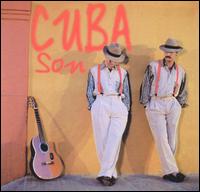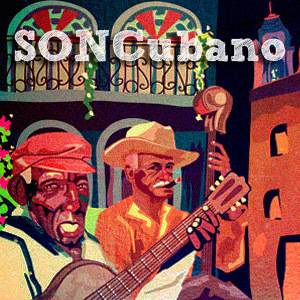![]() “The ‘Son’ is the more sublime, to the soul having fun”… said the great sonero Arsenio Rodriguez and we add that in this cubanisimo gender musical and of dance converge elements from of the music Spanish and African.
“The ‘Son’ is the more sublime, to the soul having fun”… said the great sonero Arsenio Rodriguez and we add that in this cubanisimo gender musical and of dance converge elements from of the music Spanish and African.
To interpret it is requires a wide range of elements music. Its origin there are that search it by several cities of the region Eastern as Guantanamo, Baracoa and Manzanillo, where the letter of an are ensured that was the city in which “is dance the are in underpants and Nightgown!!”
Them specialists indicate the appearance of them first sones around the second half of the century XVI and one of them more known is without doubts the are of the Ma Teodora of 1562.
His background are in the nongo, the nengón and the changüi of Guantanamo, in the area more East of the archipelago Antillean.
See as the are is unfold musically and so are the guajira-son, the Bolero, the guaracha-son, the rumba-son, the guaguancó-are. Also, many rhythms have their origin in the are, so have the Sucu sucu, the pylon, the Mozambique, the sauce, and until the reggaeton-are, if, by that of the fusion.
The Trio Matamoros founded in 1920 is the oldest logo format of trio sonero. With the rise of the genre and its marketing format was extended and was growing of quartets, sextets, Septets, sound, ensembles and orchestras.
The most widely used instrumental training currently is piano, guitar, bass, bongo, maracas, key, trumpet, three, vocals, congas and other elements of the percussion.
Some significant within the sound is called Montuno, which is not a musical genre. The emergence of this word comes from the term monte, applied initially in the Eastern territory of the country.
According to the musicologist and historian Giro Radamés “after the expressive or narrative part of the piece is what happens to the part B, which is the montuno strictly speaking, and in which alternate the solo – improvise – who tells him the choir, the responsorial manner characteristic of the music of African history. A wide use of syncopation is made on it. We can say that the Montuno which fitted a special, tasty, flavor that increases that already brings the son, guaracha, rumba.
Agencies/encyclopedia/Juan B. Rodríguez/InternetPhotos/YouTube/Arnold Varona/TheCubanHistory.com
THE CUBAN HISTORY, HOLLYWOOD.
“El Son es lo más sublime, para el alma divertir”…dijo el gran sonero Arsenio Rodríguez y nosotros agregamos que en este cubanisimo género musical y de baile confluyen elementos procedentes de la música española y africana.
Para interpretarlo se requiere una amplia gama de elementos musicales. Su origen hay que buscarlo por varias ciudades de la región oriental como Guantánamo, Baracoa y Manzanillo, donde la letra de un son aseguraba que era la ciudad en la que “¡se baila el son en calzoncillo y camisón¡”
Los especialistas señalan la aparición de los primeros sones alrededor de la segunda mitad del siglo XVI y uno de los más conocidos es sin dudas el Son de la Ma Teodora de 1562.
Sus antecedentes están en el ñongo, el nengón y el changüí de Guantánamo, en la zona más oriental del archipiélago antillano.
Vemos como el son se desdobla musicalmente y así encontramos la guajira-son, el bolero-son, la guaracha-son, la rumba-son, el guaguancó-son. También, muchos ritmos tienen su origen en el son, así tenemos el Sucu sucu, el Pilón, el Mozambique, la Salsa, y hasta el reguetón-son, si, por aquello de la fusión.
El Trío Matamoros fundado en 1920 constituye el formato insignia más antiguo de trío sonero. Con el auge del género y su comercialización se fue ampliando el formato y fue creciendo de cuartetos, sextetos, septetos, sonoras, conjuntos y orquestas.
La formación instrumental más usada en la actualidad es piano, guitarra, bajo, bongó, maracas, clave, trompeta, tres, voz, tumbadoras y otros elementos de la percusión.
Una parte significativa dentro del son es el llamado Montuno, que no es un género musical. El surgimiento de esta palabra viene del término monte, aplicándose inicialmente en el territorio oriental del país.
Según el musicólogo e historiador Radamés Giro “después de la parte expresiva o narrativa de la pieza es que pasa a la parte B, que es el montuno propiamente dicho, y en el cual alternan el solista- que improvisa-y le responde el coro, a la manera responsorial propia de la música de antecedente africano. En él se hace un amplio uso de la síncopa. Podemos decir que el Montuno es el que le incorpora un sabor especial, sabroso, que incrementa el que ya trae el son, la guaracha, la rumba.
Agencies/Enciclopedia/Juan B. Rodríguez/InternetPhotos/YouTube/Arnoldo Varona/TheCubanHistory.com
THE CUBAN HISTORY, HOLLYWOOD.







